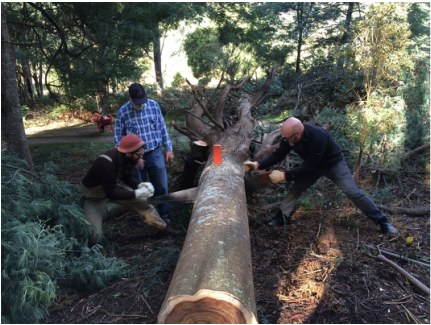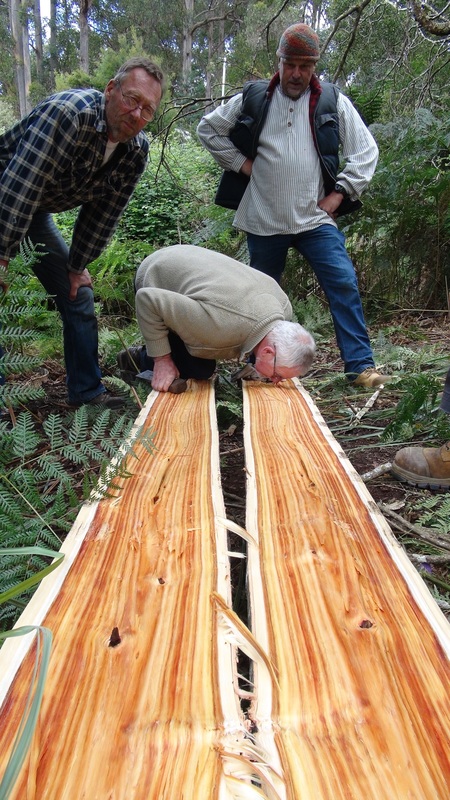Green woodworking
Green wood and green woodworking
|
In a contemporary setting the term 'green' implies a respect for our environment. Green woodworking is indeed very respectful towards the environment but it's not the primary reason for the term. Jennie Alexander - who in the 1970s was very much responsible for reviving traditional chair making in the United States - is acknowledge by many as the person who first coined the term in relation to woodworking. Jennie illuminated the many differences between working wood in its green state as compared to its seasoned state.
|
|
Simply put, green woodworking is working wood that has been taken from a recently felled, living (green) tree.
Green woodworkers like to begin their relationship with the tree while it still grows. They study the environment around the tree and examine the tree's bark. Trees, like us, don't always have a smooth journey through life. They might spiral towards the sun light, increase tension on one side to counter a prevailing wind, grow wider growth rings on one side to counter a sloping hillside and grow over the stubs of broken branches. Much of what lies inside the tree can become known before the tree's life is taken (or not). Look and listen carefully and you will come to understand much of the tree's story. |
|
|
But this is not a story of death. The green woodworker's relationship with the tree is about creation and the method of harvesting means the impact on the environment will be minimal. Seedlings sown by the tree will soon shoot skyward and much of this tree will live on in new and more permanent forms.
Once felled, the tree is bucked with a crosscut saw into appropriate lengths (billets) and then worked from being a 'log into leg' or other shaped piece. |
|
Green wood is full of water. Like a soaked kitchen sponge, most of the free water in it soon drains away, leaving a damp material, the cell walls of which will dry more slowly. As the seasons pass, the wood cells continue to dry until they reach a moisture content that's equivalent (EMC) to the air that surrounds them.
Green woodworking transitions to seasoned woodworking as the free water in the wood drains or evaporates. The wet fibres in green wood are tender, malliable and much easier to split apart or sever than when seasoned. Thus, green wood makes working with hand tools much easier and eliminates the need for protective clothing. Your hands, nose, ears and eyes take in the wonder of the material and allow you to fully sense your relationship with the wood. Students are often drawn to the earthly scent and damp, soulful face of freshly riven (split) wood. But how can still-wet fibres be the perfect material? Won’t the wood shrink and crack and take months to dry? Isn’t green wood difficult to control? Won’t the moisture wreck your tools? How will the joints hold together if the wood shrinks? The answers to these questions and many more will be answered during courses. Green woodworking changes the relationship you have with wood. |
|



